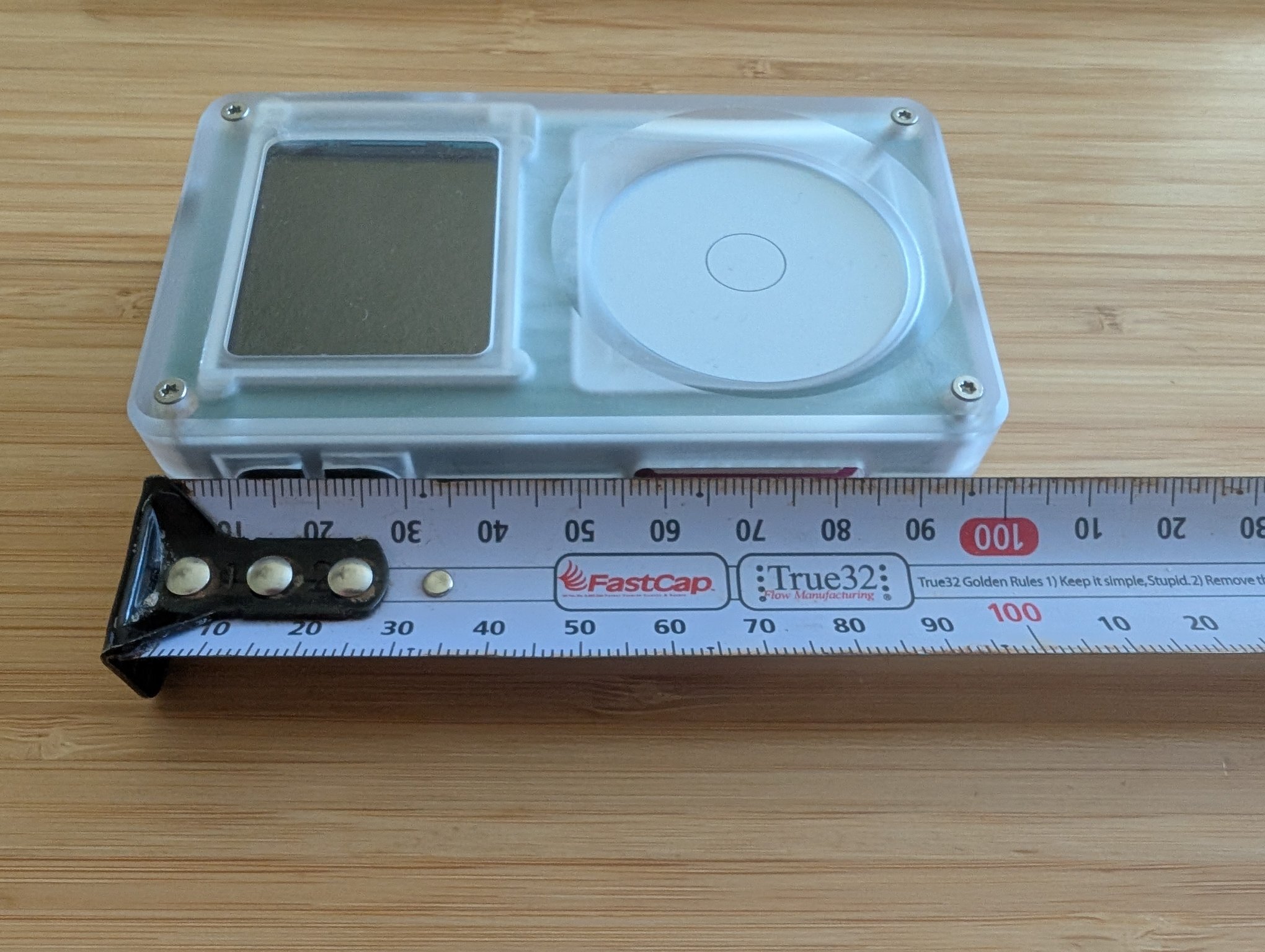For instance, a foot…is basically a foot length. So there’s this foot-measuring waddle some people do walking literally heel-to-toe to get a general sense of the space. An inch is kinda a finger width, etc (they’re all not perfect by any sense).
I’ve decided to just take the plunge and basically re-learn all my measurement systems because I’m seeing less and less of those being used. I started with just memorizing all the conversions but that’s literally just adding another step. Everything I own basically has settings to switch or show both measurements (like tape measures) so I’m just going to stop using Fahrenheit and the United states “Customary System” all together.
Any tips or things you’re taught or pick up on? There’s a funny primary school poem for conversion of customary liquid measurements,
Land of Gallon
Introducing capacity measurement to learners can be challenging. To make this topic more accessible and memorable, we can integrate creative and interactive activities into our teaching approach. Using storytelling, we can transform the sometimes daunting task of learning measurement conversions into a whimsical tale.
- In the Land of Gallon, there were four giant Queens.
- Each Queen had a Prince and a Princess.
- Each Prince and Princess had two children.
- The two children were twins, and they were eight years old.
Once students are familiar with the story be sure they see the connection between the story characters and the customary units of capacity measurement. If necessary, label the story pieces with their corresponding units of measure: queen = quart, prince/princess = pint, children = cups, 8 years old = 8 fluid ounces. You can reduce the number of customary units in the story based on student readiness. link
tl;dr looking for anything to remember the hierarchy and memorizing the metric and Celsius measurement system, sometimes explained in schooling or local sayings. (if I had an example for those systems I would give one lol).
A person who buys some material, Thinks to themselves managerial, I could use grams or litres, Maybe even amps or square meters, At least it isn’t Imperial.
For daily use of temps, I found it best to just switch my apps and stuff to use Celsius. Then just made a point to take mental notes as to see what the current temps were on my devices. Especially when it was feeling too hot or cold. On days that felt nice, would see what temps they were and just kind of learned what ranges were between them (I tend to find 16-23C to be fine warm temps).
I can’t say exactly what the temps in Fahrenheit directly. But can give a range for friends and co-workers if they happen to ask me what the temps are outside (they obviously take the Celsius value as not helpful but they know I am going to give them). I can say that for me the “exposure therapy” of just using Celsius has been much easier than things like distance. I can kind of handle thinking of static distances, but I am not able to translate active things like speed.
I’m in Canada, and learning French in school actually helped me with fractional measurements since French is based on Latin.
Cent is 100 in French, so 1/100 meters is a centimeter
Mille is 1000 in French, so 1/1000 meters is a millimeter
Dix is 10 in French, so 1/10 meters is a decimeter (this is last because it’s not super helpful since you never see deci- units in the wild outside of niche applications)
And for the powers of 10, we only really talked about kilo (1000) in school, but I was interested in computers since I was a child so I figured out mega, giga, terra, etc fairly early on.
1 cm is about the width of the tip of your pinky finger.
1 m is about the distance from your nose to your fingertips if you hold your arm out, and extend your fingers.
100 m is the length of the straight section of an athletic track, which is about the same length as a football field.
1 liter is about 1 quart, which is 1 carton of milk.
The m-to-km conversion is pretty close to 1½.
The kg-to-lb conversion is two-and-a-bit.
A difference of 1°C is close to a difference of 2°F.
I raised my kids using metric temperature for weather. Now that they’re older they hold me to it!
The m to km conversion factor is exactly 1000. Same with g to kg and Pa to kPa, W to kW etc.
(maybe you were going for mi to km? Which is 1.6?)
realistically, nobody uses all the units.
eg, decimeters are practically unheard of.
anyway, start measuring things around you. like your fingers, your hand, your ceiling height, that sort of thing. and then remember what those measurements feel/look like. that’ll give you something to compare other things to. you can do the same thing with volume measurements and so on.
for example, i found that one of the knuckles on one of my fingers is exactly 4cm long, so i always have that with me.
There is so much potential for unused unit systems. Imagine if gigameters where used instead of light years!
1L of water is 1kg
2L bottle of cola is 2kg
It’s better than 1L because who even knows what 1L is?
milk comes in 1L boxes, for example, so pretty much everyone knows what a liter is.
sugar and flour come in 1kg bags and that’s roughly 1 liter too
True, 1L are hard to find
It’s great that the units are linked like this. I actually had to use this once. I didn’t have a container to measure out 1liter of water, but I did have a kitchen scale that could measure 1,000 grams! 🙌🏽
Measuring liquids by mass is even more accurate because the volume is related to temperature, plus the surface tension and water’s tendency to climb up the walls of the container can make the volume readings ambiguous
1 km is about 15 minutes walk.
1 meter is about a step.
1 cm is about the thickness of a gusset on medium sized industrial machinery
1 kg is about 2 pints (or a little more than a quart)
20°C is comfortable for most people, 35+ is uncomfortably warm
That’s nice, though I’d say 1 meter is more like a long stride, or at least two walking steps.
2 pints of lead is about 1kg?
A kg is a measure of mass. A pint is a measure of volume.
This has messed with my head that you’ve equated them with each other.
I’m guessing you meant a litre is about 2 pints?
A good base is knowing milli is a thousandth and kilo is a 1000 1000 milligram = a gram, 1000 grams = a kilogram 1000 millililters = a liter, 1000 liters = a kiloliter 1000 millimeters = a meter, 1000 meters = a kilometer
Plus, they’re all connected. 1 gram of water is 1 milliliter and takes up 1 cubic centimeter.
Ive never heard kiloliter, at that point I say a thousand liters, or a cubic meter.
A good base is knowing milli is a thousandth and kilo is a 1000
YES! I feel like a common pitfall people run into is trying to bust out all sorts of fancy prefixes, deka, hecto, centi, deci, etc and then people get overwhelmed by all of that.
The most common prefixes are kilo 1000x or milli 1/1000. That’s all you should focus on.
I mean centimeters is probably the most common in households and centiliters at least in cocktail recipes. But yes, you don’t really need deka, hecto or deci in your daily life and you can grow up not knowing they exist at all. It would also make things like tape measures too complicated to look at.
centimeters is probably the most common in households
I’m curious, where are you from? In the US, I’d say we think of centimeters as a pseudo-inch, so I think I understand why people would gravitate to centimeters here.
But do other countries use centimeters as much? I’m especially curious about really metric countries like Japan or (who else?) France? Germany? I wouldn’t be surprised if Canada or UK use centimeters.
Related: centimetres or millimetres
Most countries in the world are “really metric countries”. And yes we do use the cm a lot for measurements inside the 1-100cm range.
I’m from Germany and we use cm a lot. I can’t imagine not having anything between mm and m, the gap is huge. Those are probably the most used ones in daily life and km for distances farther than 999 m.
Here’s a common German tape measure next to a book, which is 20.6 cm (206 mm, 0.206 m) long:

Cool! Thanks for sharing!
Now that I think about it, I think I own a carpenter’s measuring tape. Maybe that’s why they don’t call out cm.

Also just to be clear, my measuring tape is definitely not a standard tape you can buy at a local hardware store. It took some effort for me to find a metric-only measuring tape.
I know some people in the building profession who habitually call out everything in mm, as oppose to most people where I am using cm for most household measurements. So I’m not surprised to see measuring tape (esp a carpenting one) ignoring the redundant cm
Interesting, I’ve never seen a tape measure like this. In the end it’s the same thing, just remove a zero and you have cm. That’s the magic of it.
But i understand now how you came to the conclusion that centi is not used that much.
I really hope the US will at some point adopt the objectively better metric system!
I really hope the US will at some point adopt the objectively better metric system!
Me too. I’m trying! 🤝
Plus, they’re all connected. 1 gram of water is 1 milliliter and takes up 1 cubic centimeter.
To heat said water by 1 degree celsius (or kelvin) you need one calorie. If one newton were to displace that water through the distance of one meter, the amount of work done would be 1 milijoule.
30 is hot, 20 is nice, 10 is cool, 0 is ice.
Honestly, with metric, 24 hour time and celcius, the easiest way to learn is just to switch to it completely.
I’m in an imperial country and still switched over to metric/24h/c just because it makes a lot more sense for most personal stuff. It’s been enough years that I know much of it just ambiently. I prefer it, tbh.
Get ruler. Hold your arm out 90degrees, Measure from the tip of your finger 1 metreacross your body, and rember where that Metre ends on your body. Then you always have a reference for 1metre
I was taught this to measure electrical cable. For me it’s from my left shoulder bone to my right finger tips (or the right shoulder to left finger tips)
Celsius:
0 is the phase transitiom temperature for water between solid and liquid under normal atmospheric pressure. 100 is the phase transition temperature between liquid and gas under normal atmospheric pressure.
knew about the 0 but not the 100, good shit.
Also, this one might be somewhat subjective since stuff can feel hot or cold depending on the person, but body temp is around 37C, with hands lagging behind a degree maybe.
Even a two degree difference is obvious, and helps with pets (cats have an internal temp of 39 and dogs of 37), and to a lesser degree, cooking.
looking for anything to remember the hierarchy and memorizing the metric and Celsius measurement system, sometimes explained in schooling or local sayings. (if I had an example for those systems I would give one lol).
This is how I was taught it in school:

Man you got some giant feet and sausage fingers lol
That thing about the queen and the princes etc. is silly and just gets in the way. Don’t those people have anything better to do?
It could be useful at times, in my experience it’s just two people trying to remember this strange ass poem and end up having to look it up anyways.
You mean the pint’s a pound poem? It’s not even right, you know. A pint of water weighs about 1.04 lb.
didn’t know that one, was referring to the Land of Gallon one. Get to prince and princesses then everything would get fuzzy, recently acquired a hot-plate thing with conversions on it so remembered even less of it till I looked it up again.
I just learned some basic things and go from there.
A Ruler is Ruler 12 inches or 30 cm
A meter is roughly equivalent to a yard slightly more and both are like 1 big step
And then i just remember that theres 2.2 lbs per kg
1.6 kms per mile










